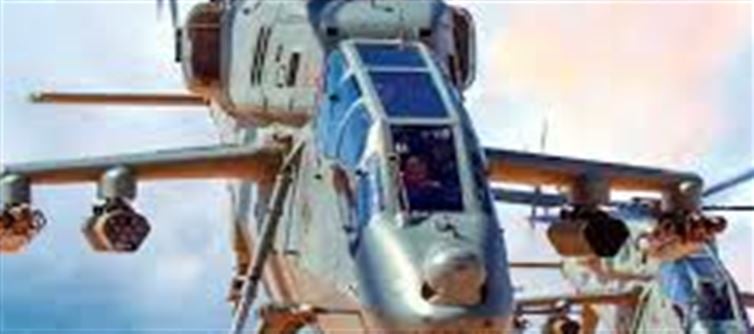
India’s Hindustan Aeronautics Limited (HAL) is set to revolutionize the country’s defense capabilities with the delivery of 156 upgraded Light Combat helicopters (LCH) to the indian Armed Forces by 2033. The indigenous LCH Prachanda, already known for its superior combat prowess, will undergo significant upgrades to ensure it remains at the forefront of modern warfare. Here’s a breakdown of what’s in store:
1. The Power of Indigenous Technology: LCH Prachanda
India’s Light Combat Helicopter (LCH), dubbed Prachanda, is an indigenous marvel developed by HAL. It was designed with advanced technologies, combining the agility and firepower needed for combat in high-altitude regions like Siachen Glacier. With the upcoming upgrades, the LCH will be a cutting-edge platform for precision strikes and tactical operations in various terrains.
2. Massive Production Goal: 156 Units by 2033
HAL plans to deliver 156 upgraded LCHs to the Indian Army and Indian air Force (IAF) over the next decade. This large-scale production is part of India’s push for self-reliance in defense technology under the Atmanirbhar Bharat initiative. By 2033, the armed forces will be equipped with these upgraded combat helicopters, providing them with a major edge in defense operations.
3. Key Upgrades: Enhanced Combat Capabilities
The upgraded LCH will feature several enhancements aimed at boosting its combat efficiency:
· Advanced Weapon Systems: The LCH will be armed with new-generation missiles and precision-guided munitions, making it more effective against both static and moving targets.
· Improved Avionics: With state-of-the-art avionics, the upgraded LCH will have better target acquisition systems, night vision capabilities, and electronic warfare capabilities.
· Enhanced Armor: The new models will have reinforced armor to protect against enemy fire, particularly when operating in hostile environments.
· Increased Operational Range: With improved fuel efficiency, the LCH will have a greater operational range, allowing it to carry out longer missions without frequent refueling.
4. High-Altitude Performance: Ready for the Himalayas
One of the standout features of the LCH Prachanda is its ability to operate in high-altitude areas. This makes it especially suited for regions like Siachen and Ladakh, where other helicopters face limitations due to the thin air. The upgraded LCH will have enhanced engine performance and maneuverability in these challenging terrains.
5. Faster Deployment: Rapid Response Capabilities
The LCH’s small size and rapid mobility make it ideal for quick response missions. Whether it’s counter-terrorism operations, search and rescue, or close air support during conflicts, the LCH can be deployed quickly, reducing the time between decision-making and execution on the ground.
6. Strategic Implications: Strengthening National Defense
By upgrading and producing the LCH Prachanda, india is not only enhancing its military capabilities but also reducing dependence on foreign defense suppliers. The Make in India initiative is gaining momentum, with HAL leading the charge in manufacturing world-class combat helicopters that can be used in various defense sectors. This move strengthens India’s position as a regional power, capable of self-sustained defense in any combat scenario.
7. Future Prospects: Export Potential
With the success of the LCH Prachanda in India’s armed forces, there is also significant export potential for the upgraded model. HAL aims to explore international markets for its combat helicopters, offering them to countries looking for cost-effective and highly capable combat platforms.
Conclusion: A New Era of Combat Aviation
The upgraded LCH Prachanda represents a giant leap forward for India’s defense sector. With cutting-edge technologies, increased combat versatility, and self-reliance in defense production, this helicopter will be a formidable asset for the indian military. As HAL pushes forward with the ambitious plan to deliver 156 units by 2033, the indian Armed Forces are set to become even more formidable in the skies.
Disclaimer:
The views and opinions expressed in this article are those of the author and do not necessarily reflect the official policy or position of any agency, organization, employer, or company. All information provided is for general informational purposes only. While every effort has been made to ensure accuracy, we make no representations or warranties of any kind, express or implied, about the completeness, reliability, or suitability of the information contained herein. Readers are advised to verify facts and seek professional advice where necessary. Any reliance placed on such information is strictly at the reader’s own risk..jpg)




 click and follow Indiaherald WhatsApp channel
click and follow Indiaherald WhatsApp channel